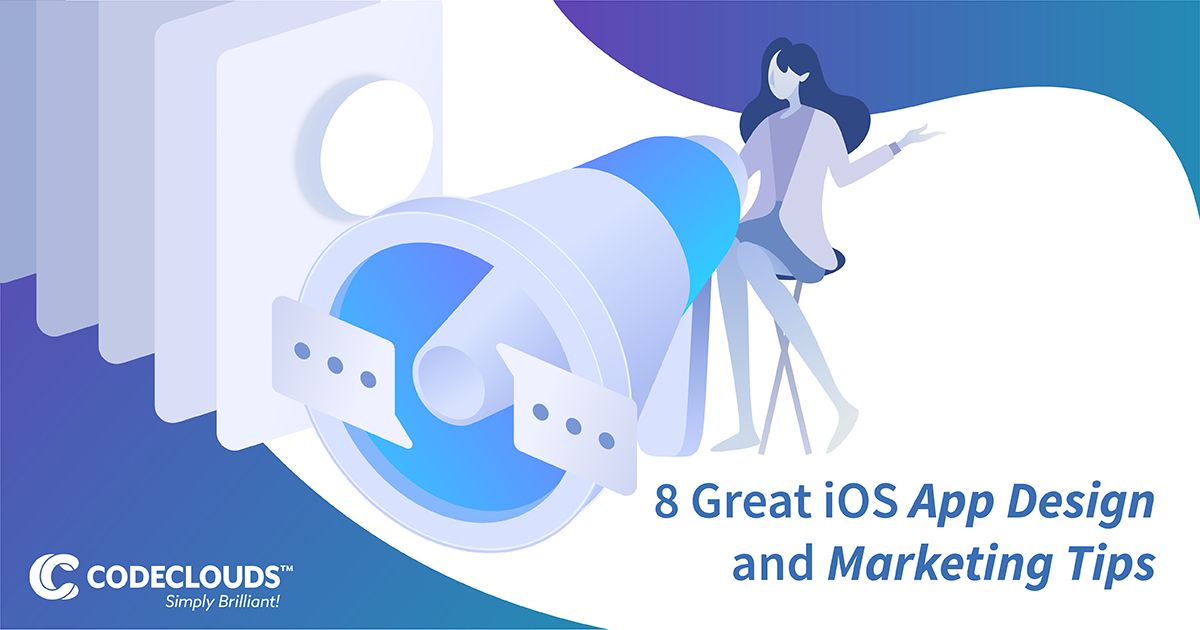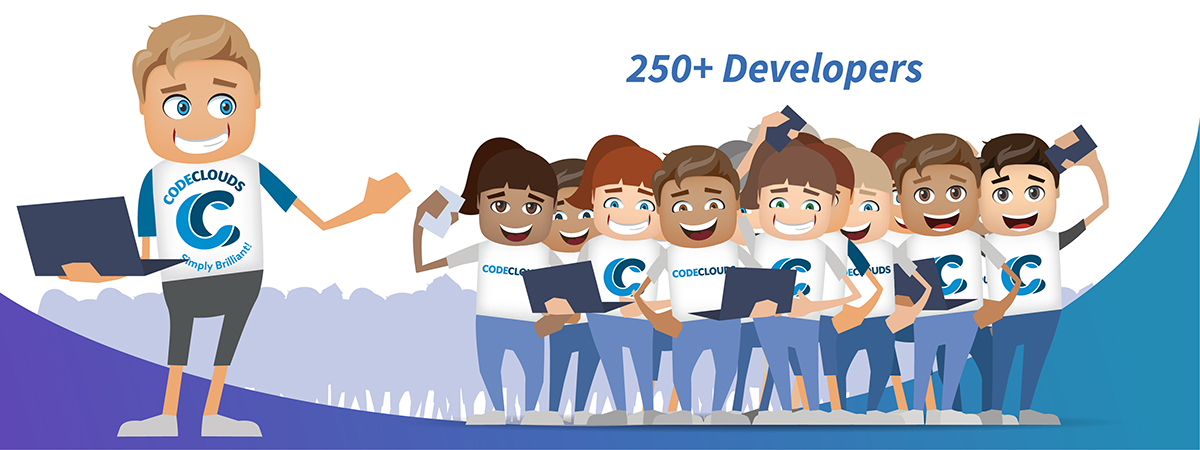Overview
Saying Apple is a big deal is like saying the moon is a big rock—it’s true, but it doesn’t even really begin to cover it. Apple is one of the largest companies in the entire world, and their proprietary OS is on millions and millions of devices. If you’re an independent developer who wants a piece of that Apple pie, there’s no better way than getting into iOS app development. Today at CodeClouds, we’re going to go over some core design and marketing techniques that can help you get yourself to the top of the app store.

DESIGNERS
The very first thing you need to do is check out the official iOS design guideline. The second thing is to find out which screens are on the market—this changes constantly and can be hard to predict. Apple keep a page of official screen dimensions that’s a good resource.
Read the docs!
Apple has great documentation and it’s a good way to keep track of new features or changes. Keep track of their docs and especially their release notes so you’re aware of the full potential of your app. Apple updated iOS 15 times in 2018, and that’s not including minor updates—they are constantly moving things around, and it can be a gift or a curse depending on what you need your app to do.
Look into responsive design
If you’re making a web app, you’re going to want to take advantage of CSS @media queries to move content around based on screen dimensions, and you’re going to want to have a plan for every screen in circulation (and some that aren’t—not everybody gets the new model as soon as it comes out). This isn’t the only tenet of responsive design, but it’s the core thing that makes the rest work.
The 2 second rule
There’s a common saying in app design that if an app needs a tutorial, it has failed. I’m not sure I’d speak that strongly, but it speaks to something critical about apps: they need to be immediately comprehensible or they’re not going anywhere. User engagement and retention drops fast after just 2 seconds—if users don’t immediately see what they’re looking for, then they’re gone. Your app’s main page needs to be:
- visually striking
- instantly clear how it works
A good way to go about this is by breaking things up into a succession of smaller pages—figure out which parts of the funnel you can move out of sight, so the app’s landing page has a single, clear input and goal.
Users: the forgotten tool
If there’s anybody who knows more about the app than you do, it’s the people who use it on a daily basis. If they’re singing your praises, great! If they’re not, that’s also important to know—the signal/noise ratio isn’t always great, but if you’ve got the patience to sift through them, you can get valuable insights about where to go with the next iteration. Easy-to-access feedback should be a key design consideration.
You also want to keep on top of negative reviews: try to respond to them in a professional manner, and work to resolve whatever issues the users are having. You don’t need to respond to every user (see the comment about signal/noise), but if they are having a legitimate problem then you need to get on top of it.
You can also do this with competitors’ apps: are a lot of their 1-star reviews complaining about the same issue? Are they demanding the same feature? Put that feature in your app and watch your sales soar.
The App design checklist
Make sure your app has the following:
- Simple, streamlined UX
- A direct call to action
- Social proof (reviews, testimonials etc)
- Contact information
- Social media links
It’s not enough for these things to be present: they need to be intuitively easy for a user to find. I’m banging a bit of a drum here, but it’s important: a complicated app is a bad app. Even applications that are incredibly complex under the hood (like say, games) need to appear simple for end-users.
MARKETERS
Why are you different?
Every marketing guide brings up the point that there’s a lot of similar apps to yours out there, but few of them seem to know what to do about it. Here’s what you do about it: figure out why you’re different. Early. The day after you move into the office, put the team in the meeting room with a stack of pizzas, and nobody leaves until your Unique Selling Point is distilled down to a single, clear sentence. Print that sentence out on nice paper and pin it somewhere visible. It’s not the same as your slogan: it’s not for the public, it’s for you. This is where design, development and marketing converge: the unique thing you’re selling your product on needs to be an atomicly indivisible element of production. Identity isn’t something you slap on as an afterthought, it’s something you bake in from the beginning.
Know your markets
Generally speaking, Google Play’s market share is significantly larger than Apple’s. There is one exception, but it’s a big one: China. While Android apps are available through 3rd-party vendors, the official Google Play store is blocked, and Android has a less commanding market share. There is a Chinese version of the official iOS app store—if you neglect China, you’re missing out on the single largest market in the world.
That’s not to say you shouldn’t make iOS apps in English or French (far from it!) but that a Chinese translation should be high on your priority list, and figuring out what the Chinese market wants (and investing your ad dollars there) will give you a powerful edge. There’s currently a bit of volatility due to the ongoing trade war between China and the US—there’s some speculation that China might ban iPhones in retaliation for the US banning Huawei, but nothing has materialised so far; as of June 2019, Chinese sales make up almost 20% of Apple’s total revenue.
Generally speaking, unless you’re thinking very local (e.g. an app for San Francisco that gives up-to-date information on BART) think globally—a lot of marketers and developers set their scope wrong and don’t consider options outside of their own country. Apple is generally popular in developed nations, but Sweden has 10 million people and Indonesia has 264 million—investigating the Indonesian market is a better play than a lot of marketers give it credit for.
Don’t Pivot to Video
A lot of app development guides are starting to show their age because they put a heavy emphasis on video production as the be-all-and-end-all of content. 2016 seems like a century ago, doesn’t it? In 2019, we know that the statistics supporting video’s reach were overestimated by 150% to a whopping 900%. Video is fine if you do something unique or interesting with it, but anybody telling you that users vastly prefer video (and hate text) is running off incorrect statistics from 2015. The reality of video is—like all content—users will engage with it if it’s good and offers them value. It’s like a screwdriver: it offers something unique and important in your toolkit, but if you use it for everything then you’re just going to end up filling your kitchen with holes.
In-app video in particular isn’t as popular as estimated. Facebook, Twitter and Instagram? Sure, it’s as effective as ever. Users expect video on those platforms, and are much more willing to engage with it. A built-in video player on your app that plays marketing materials? That’s a dud.

You know what’s not a dud? The iOS app development services here at Codeclouds. We’ve got over 250 developers who can work magic with Swift. Whatever sort of iOS app you’re after, we’ve got people who can bring it to life.

Share this article
230 reads
Similar Reads








